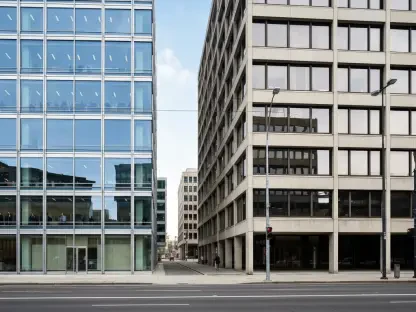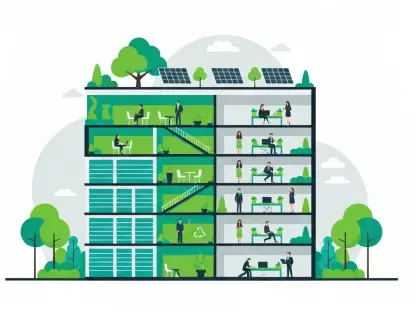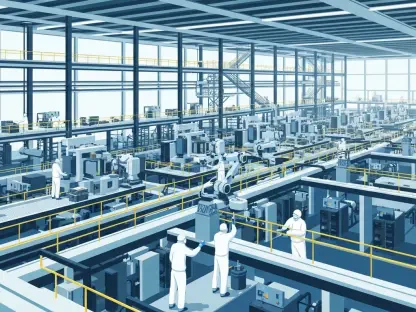The Modular Construction Buildings market is set for transformative growth through to 2024. As the industry steers towards more sustainable and efficient building processes, modular construction emerges as the protagonist in the narrative of contemporary development. This article extracts the essence of market evolution, pinpointing key dynamics and growth drivers integral to the shaping of modular construction’s future.
Insights from Orbis Research on the Modular Market
Modular construction stakes its claim in the future of buildings by redefining traditional construction methodologies. These modern structures are conceived in controlled environments—piece by piece—to meet rigorous standards akin to their on-site constructed counterparts, with the added benefits of reduced waste and expedited timelines.
Market Overview and Key Players
Since 2018, the Modular Construction Buildings market has witnessed an upswing in activity, with a footprint that stretches from the bustling cities of North America to the innovative hubs of Asia-Pacific. Standout market leaders like Bouygues Construction, Lendlease Corporation, Laing O’Rourke, and Sekisui House are at the vanguard of the industry’s surge, propelling the sector forward with groundbreaking initiatives and robust market strategies. Their propensity to innovate and adapt heartily reflects the market’s dynamic nature and sets a precedent for competitive positioning and strategic growth within the modular sector.
Regional Dynamics and Segment Analysis
The modular construction space is a patchwork of regional characteristics, each with its distinct market cadence and challenges. As such, understanding the variances in floor size and application segments is paramount: from cozy less-than-999-sq-ft abodes to sprawling 2500-sq-ft corporate spaces; from residential complexes shaped by individual needs to commercial behemoths defined by enterprise. By dissecting these segments, investors can pinpoint where modular construction resonates most and where the untapped opportunities lie.
Market Evolution and Technological Advancements
The forward momentum of the modular construction market owes much to the unceasing wave of technological evolution and innovative practices.
Adaptation and Innovation as Key Drivers
The winds of change blowing through the modular construction landscape since 2018 have carried with them a spirit of ingenuity. The industry has not just witnessed adaptation—it has pioneered it, folding technological advancements into its core makeup. These advancements have opened doors to improved precision, versatility in design, and cost-effectiveness that was previously unattainable. Modular construction is no longer an alternative; it is a flagship of modern industry practices, emerging as an influential shaper of urban skylines.
Market Resilience and Evolutionary Capacity
The resilient nature of the modular construction sector is not merely a byproduct of industrial trends; it is the result of an inherent evolutionary capability that has long defined its market stance. Even as the broader construction industry grapples with fluctuating economic currents and shifting policy climates, modular construction emerges with an adaptive shield—continually advancing efficiency and sustainability in its wake.
Understanding Market Dynamics
To tap into the Modular Construction Buildings market’s potential up to 2024, a deep dive into consumption trends, competition, and supply chains is essential.
Detailed Supply Chain Analysis
The intricate web of the supply chain is perhaps where the modular market’s pulse beats the strongest. By meticulously cataloging the roles of suppliers, buyers, and merchants, we gain clarity on the nuances of market interactions. This scrutiny unravels the sinews of production flows, pushing stakeholders to strategize with profound market cognizance. As such, navigating through the supply channels becomes essential in predetermining successful market ingress and customer satisfaction.
Market Growth Patterns and Trajectories
The Modular Construction Buildings market is on the cusp of significant change, expected to dramatically expand by 2024. As the construction industry pivots toward greener and more efficient methods, modular construction is becoming increasingly central in modern building practices. This shift signifies a broader trend towards embracing innovative solutions that can lead to more sustainable outcomes. As we progress, key factors are driving the market growth of modular construction, including the demand for quicker construction timelines, reduced waste, and the ability to scale projects efficiently. Industry experts predict that as modular building techniques continue to improve and as the benefits become more widely recognized, this segment of construction is likely to experience a surge in popularity, making it a cornerstone of development strategies focused on sustainability and effectiveness.









